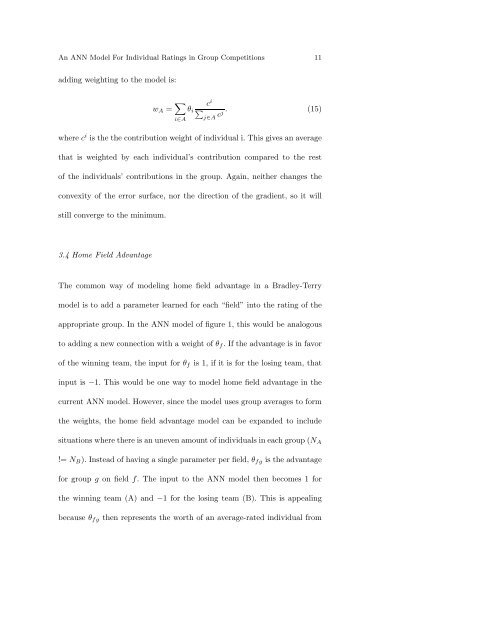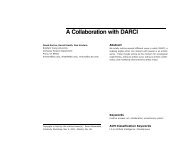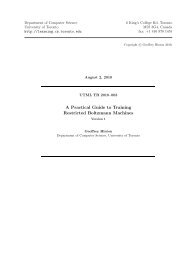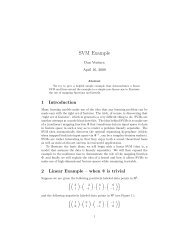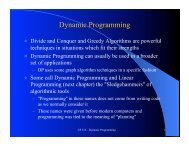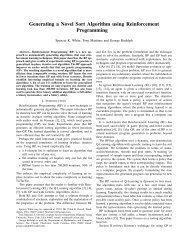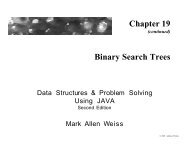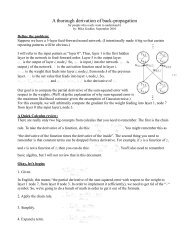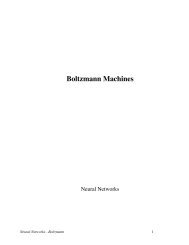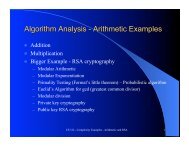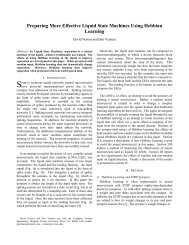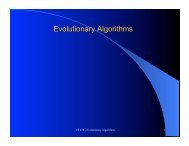A Bradley-Terry Artificial Neural Network Model for Individual ...
A Bradley-Terry Artificial Neural Network Model for Individual ...
A Bradley-Terry Artificial Neural Network Model for Individual ...
You also want an ePaper? Increase the reach of your titles
YUMPU automatically turns print PDFs into web optimized ePapers that Google loves.
An ANN <strong>Model</strong> For <strong>Individual</strong> Ratings in Group Competitions 11<br />
adding weighting to the model is:<br />
w A = ∑ i∈A<br />
c i<br />
θ i ∑j∈A<br />
cj<br />
. (15)<br />
where c i is the the contribution weight of individual i. This gives an average<br />
that is weighted by each individual’s contribution compared to the rest<br />
of the individuals’ contributions in the group. Again, neither changes the<br />
convexity of the error surface, nor the direction of the gradient, so it will<br />
still converge to the minimum.<br />
3.4 Home Field Advantage<br />
The common way of modeling home field advantage in a <strong>Bradley</strong>-<strong>Terry</strong><br />
model is to add a parameter learned <strong>for</strong> each “field” into the rating of the<br />
appropriate group. In the ANN model of figure 1, this would be analogous<br />
to adding a new connection with a weight of θ f . If the advantage is in favor<br />
of the winning team, the input <strong>for</strong> θ f is 1, if it is <strong>for</strong> the losing team, that<br />
input is −1. This would be one way to model home field advantage in the<br />
current ANN model. However, since the model uses group averages to <strong>for</strong>m<br />
the weights, the home field advantage model can be expanded to include<br />
situations where there is an uneven amount of individuals in each group (N A<br />
!= N B ). Instead of having a single parameter per field, θ fg is the advantage<br />
<strong>for</strong> group g on field f. The input to the ANN model then becomes 1 <strong>for</strong><br />
the winning team (A) and −1 <strong>for</strong> the losing team (B). This is appealing<br />
because θ fg then represents the worth of an average-rated individual from


